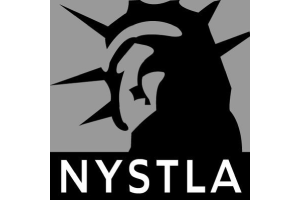Leveraged & Inverse Mutual Funds and Exchange Traded Funds
Are You Invested in a Non-Traditional Product Such as a Leveraged Inverse ETF?
In today’s investment environment, many retail investors are being presented with opportunities to invest in more complex and risky financial products. Traditionally, retail investors in the United States have invested in common stock, bonds (e.g., corporate bonds, municipal debt obligations, and Treasurys), as well as various types of funds offered pursuant to the Investment Company Act of 1940 (“’40 Act”). According to data, including a May 2017 Gallup Poll, just over ½ of Americans are invested in the stock market. However, the majority of equity investors own stocks through mutual funds, and data suggests that less than 14% of U.S. investors hold any individual stocks.
With regard to investment fund regulation, the ‘40 Act clearly defines the responsibilities and limitations placed upon open-end funds (a/k/a ‘mutual funds’), unit investment trusts (“UITs”), and closed-end funds. Among other requirements, the Act mandates that investment funds do the following:
- Register with the Securities and Exchange Commission (“SEC”);
- Have a board of directors, 75% of whom must be independent;
- Limit their investment strategies, such as the use of leverage;
- Maintain a certain percentage of assets in cash in order to provide liquidity for investors who wish to sell;
- Disclose their structure, financial condition, investment policies and objectives.
Additionally, the vast majority of exchange-traded funds (“ETFs”), many of which can be thought of as less actively managed or passive index investment vehicles (as opposed to mutual funds or closed end offerings), are also registered with the SEC. Accordingly, such registered ETFs must also comply with the provisions of the ’40 Act.
Leveraged and Inverse Funds – Has Your Broker Fully Disclosed Their Risks?
As described more fully below, leveraged inverse ETFs (as well as mutual fund that employ a similar strategy) are extremely risky and complicated financial products that are frequently not suitable for the average retail investor. In fact, these investment products are likely only suitable for professional and/or highly sophisticated investors who seek to trade these products on a short-term basis (intra-daily or daily) in order to provide some hedging to a comprehensive portfolio management strategy.
As is the case with traditional ETFs, many leveraged and inverse ETFs track broad indices (e.g., the S&P 500 Index), whereas others are sector specific, and others still are linked to commodities, including currencies. Simply put, leveraged ETFs are funds that seek to deliver multiples of the performance of the index or benchmark for which they are designed to track. The purpose of a leveraged ETF is to increase the exposure to an impact from the underlying index or investments held in the ETF. For example, the leveraged ETF may seek to double the return of an index on a daily basis. In June 2006, ProShares introduced the first wave of leveraged ETFs, referred to as “Ultra ProShares.” These ultra ETFs were designed to double the daily performance of their underlying index; for example, Ultra Dow 30 ETF is structured to provide a 2% return when the Dow Jones Industrial Average gains 1%.
Inverse ETFs (also called ‘short funds’) seek to deliver the opposite of the performance of the index or benchmark they track. Inverse ETFs employ a strategy akin to short-selling a stock, and as such, are structured to profit in downward moving, or ‘bear markets.’
Leveraged inverse ETFs (also known as ‘ultra short funds’) combine the aspects of leverage with an embedded bear strategy, seeking to achieve a return that is a multiple of the inverse performance of the underlying index.
The Considerable Risks Associated With Leveraged and Inverse Fund Investing
Both the SEC and the Financial Industry Regulatory Authority (“FINRA”) have issued the following guidance to investors concerning leveraged inverse funds and the need to conduct proper due diligence to assess these risks:
- How does the ETF achieve its stated objectives? An investor should ask their financial advisor about the techniques used by the fund to achieve its goals. For example, does the fund engage in short sales using swaps, futures contracts, or other derivatives. If so, an investor must fully understand that such complex financial strategies and derivatives can expose the fund, and by extension the investor, to a host of risks. For instance, derivatives are considered complex and aggressive investments can expose leveraged inverse funds to a number of risks, including correlation risk, credit risk and liquidity risk.
- What happens if I hold longer than one trading day? The average buy-and-hold investor should be very cautious when it comes to purchasing a stake in a leveraged inverse fund. Because leveraged and inverse funds reset their price daily, their performance can quickly diverge from the performance of the underlying index or benchmark they are supposed to track. Put another way, it is possible for an investor to suffer significant losses even if the long-term performance of the index showed a gain, simply because the investor held the fund for an extended period in which pronounced volatility led to considerable losses.
- Is there a risk that an ETF will not meet its stated daily objective? Investors should understand that there is always a risk that not every leveraged or inverse fund will meet its stated objective on a given trading day.
- What are the costs? Often, leveraged and inverse funds can be more costly than traditional ETFs or mutual funds.
- What are the tax consequences? Investors should understand that leveraged and inverse funds may well be less tax-efficient than traditional ETFs and mutual funds, particularly because the leveraged or inverse fund will reset on a daily basis, and therefore may incur significant short-term capital gains.
Do You Wish to Further Discuss Your Potential Claim?
At Law Office of Christopher J. Gray, P.C., our attorneys have successfully resolved a number of cases on behalf of investors who have sustained losses on their investments, including non-traditional investments such as leveraged and inverse ETFs. Investors who wish to discuss a possible claim may contact a securities arbitration attorney at Law Office of Christopher J. Gray, P.C. via the contact form on this website, by telephone at (866) 966-9598, or by e-mail at newcases@investorlawyers.net for a no-cost, confidential consultation.





